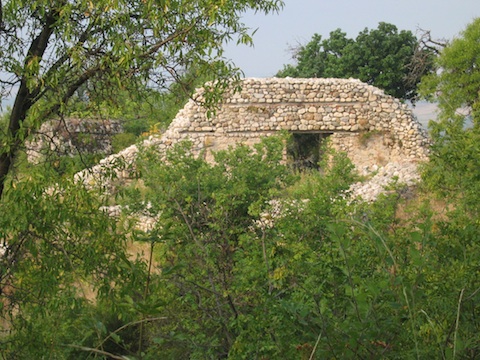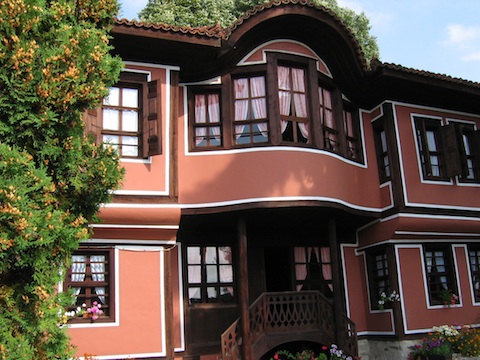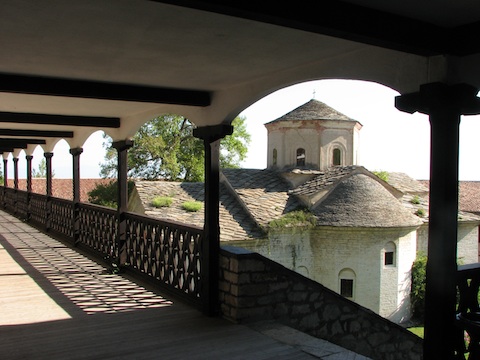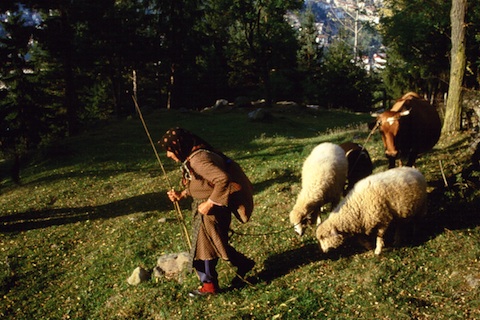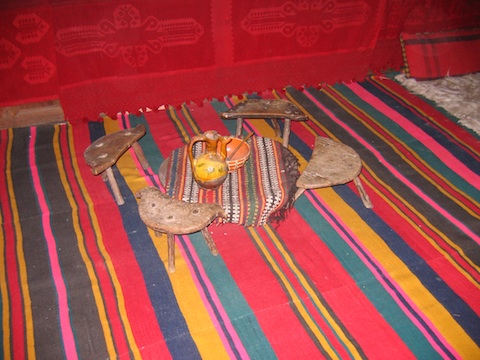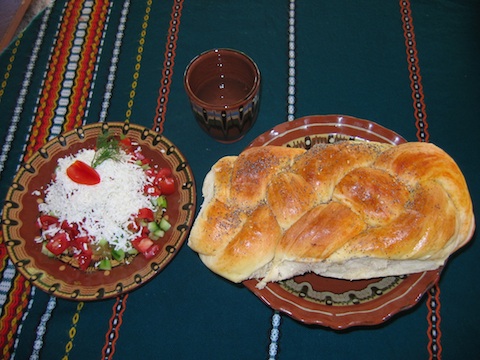Bespoke Cultural Tours in Bulgaria
Balkan Trek's unique bespoke cultural tours in Bulgaria are offered to individuals, couples or small groups. They are tailor-made to suite your own requirements, and carefully designed to provide a deep immersion in Bulgarian culture and history, offering you the chance to experience and participate in the rich cultural heritage of Bulgaria and its traditional folklore, village customs and rural life.
To find out more about the opportunities for cultural tours in Bulgaria, and to discuss the requirements of your own unique cultural itinerary, please contact Balkan Trek.
| Archaeology Holidays in Bulgaria The culture of Bulgaria has very deep roots. It is known that some 100,000 to 40,000 years BC, during the Middle Palaeolithic Period, the lands of what is today's Bulgaria were already occupied by man. In Bulgaria, many of the most interesting archaeological discoveries from the prehistoric period have been made in caves. Later, during the Neolithic Period, the peoples of the region became more settled and developed. By the end of the 2nd millennium BC, the territory of present-day Bulgaria was inhabited by Thracian tribes, and their burial tumuli and rock sanctuaries remain some of the most striking early archaeological monuments in Bulgaria, and have revealed amazing Thracian golden treasures. Later, during the 2nd century BC to 4th century AD, Bulgaria fell under the control of the Roman Empire, and their legacy is witnessed by scattered remains throughout Bulgaria including archaeological sites such as Nikopolis ad Istrum and Nikopolis ad Nestum, as well as the Roman Villa Armira in the Eastern Rodopi (Rhodope) Mountains. |
| Architectural Holidays in Bulgaria Bulgaria's architecture has evolved over the centuries from a merger of Roman, Proto-Bulgarian, Slavic, medieval and Ottoman elements. With their creations, the local master builders sort to combine functionality with great aesthetic beauty. Typically, traditional Bulgarian village houses are constructed from a combination of timber, stone, mud and straw. The ground floor was normally used for housing livestock, agricultural tools and produce. In many villages, another striking feature of the traditional architecture is the roofs, which were made from large flat stones and pierced by tall stone chimneys. Some of the finest examples of traditional vernacular architecture can be seen in the Bulgarian mountain villages. Bulgaria's architecture reached its zenith during the 18th and 19th century, when the growing prosperity of merchant classes gave rise to the National Revival Style, with their overhanging eaves, bay windows and rich interior decorations. Some of the finest examples of such houses can be seen in architectural reserves such as Plovdiv, Koprivshtitsa and Melnik. |
| Spiritual Holidays in Bulgaria Bulgarian monasteries have survived a long and turbulent history, and have, over the centuries, been guardians of Bulgarian culture. The first monasteries on the present day territory of Bulgaria were actually founded before the establishment of a Bulgarian state. During the latter half of the 4th century several rock monasteries such as those at Aladzha and Ivanovo were functioning in Bulgaria. With the foundation of the First Bulgarian Kingdom, and the subsequent adoption of Christianity as the official state religion in the 9th century, the number of monasteries in Bulgaria blossomed. Today the monasteries of Bulgaria remain not only as unique cultural and historic monuments, but as important treasure-houses of art, preserving priceless examples of frescoes, icons and woodcarving. Today, there are about 170 Orthodox monasteries and nunneries in Bulgaria, populated by a mere 120 monks and 140 nuns. The largest and most famous of all monasteries in Bulgaria is undoubtedly the Rila Monastery, which has been designated a UNESCO World Heritage Site. |
| Rural Holidays in Bulgaria The heartland of Bulgarian culture is in the villages and hamlets of rural Bulgaria. Rural Bulgaria is a land of villages and hamlets, a pastoral paradise where picturesque stone-built cottages lie clustered together on the mountainsides, tucked in behind the shelter of extensive forests, and surrounded by a rich tapestry of lush green meadows and dark brown cultivations. Here, through their skill and diligence, the local people eke out a living from the land, using traditional means and methods that have been passed down over successive generations. Bulgarian villages were the main source of Bulgaria’s famous fruit, vegetables and dairy produce, as well as the wool for their wonderful rugs, carpets and other textiles. Village life in Bulgaria was also the source of its most wonderful traditions, customs and festivals. To visit rural Bulgaria is to step back in time, a chance to sample a rural idyll, and an opportunity to taste the pure delicious local produce & cuisine! |
| Folk Dance & Craft Holidays in Bulgaria No description of Bulgarian culture would be complete without reference to the rich tradition of folk crafts in Bulgaria. Handicrafts, such as wood carving, weaving and textile-making, are all typical village skills and everyday occupations that have been learnt and mastered by ordinary Bulgarian people to produce everyday items for themselves. Today, the Bulgarian handicraft tradition continues, not only in the works of professional master craftsmen, but also in many ordinary village homes, where men and women still keep alive the traditional skills producing wonderful craft items for their own domestic needs. The majority of Bulgarian crafts continue to be functional and have a purpose and popularity. Mention must also be made to the beautiful traditional national folk costumes found throughout Bulgaria. Today, these traditional Bulgarian national folk costumes, can be regarded as exquisite works of art in their own right. Although they may not be worn any longer on a daily basis, traditional Bulgarian folk costumes can still be seen in Bulgaria at folk dance festivals and other special occasions. |
| Culinary Holidays in Bulgaria The Bulgarian cuisine is part of the Bulgarian cultural heritage. From its ancient Thracian roots, and with a liberal sprinkling of other Slavic, Turkish, Greek, Mediterranean and Middle Eastern influences, Bulgarian cuisine has developed its own characteristic features. The food one finds in Bulgaria is, therefore, a reflection of the geographical location of country. Bulgaria’s warm climate and fertile soil have provided ideal conditions for the development of agriculture, and in particular a wonderful variety of fresh vegetables, herbs and fruits, all of which help to give Bulgarian cuisine its delicious taste. One of the main features of Bulgarian cuisine is the use of fresh natural products, including nettles, dock leaves, sorrel and spinach in spring, tomatoes and cucumbers during the summer, and peppers and pumpkins in the autumn. Herbs and other aromatic seasonings are also very typical of Bulgarian cuisine, in particular parsley, dill, mint and winter savory. Other fundamental ingredients of many traditional Bulgarian meals and dishes are dairy products, notably white cheese and yoghurt. |
| Wine Tasting Holidays in Bulgaria Wine production plays an important part in Bulgarian culture. Viticulture and the production of wine have a very long history in Bulgaria, their roots going back to the Thracian period. Thanks to a favourable combination of local micro-climates and soils, Bulgaria offers ideal conditions for the cultivation of high quality grapes and the production of fine wine. Over the years, the Bulgarian wine industry has steadily developed, so that today Bulgaria ranks as the second largest exporter of bottled wine in the world after France. Bulgaria is best known for its red wines, which not only include excellent Merlot and Cabernet Sauvignon wines, but also interesting local wines such as Gamza, Mavrud, Melnik and Pamid. Bulgarian white wines do not have as high a reputation as the red wines, but it is considered that they are improving. Typical white wines include varieties such as Chardonnay, Sauvignon Blanc, and Riesling, but there are also local wines such as Misket, Ottonel, and Dimiat. It is said that the uniquely thick and fruity Melnik wine was a favourite of Winston Churchill. |

